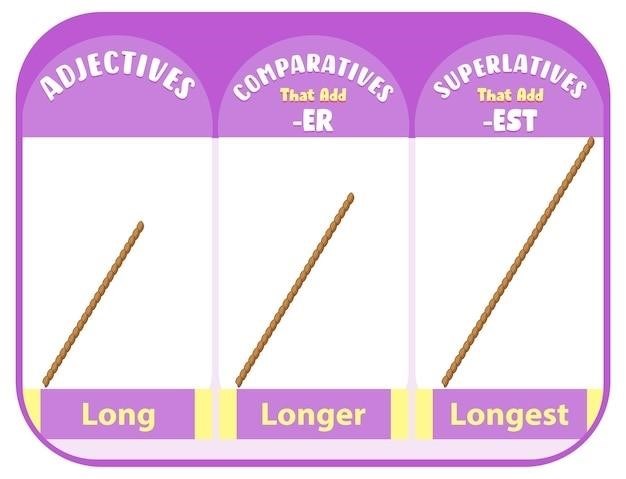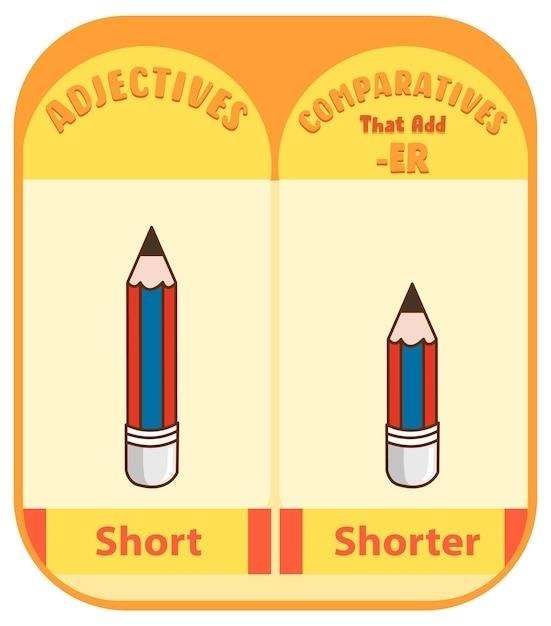CDL Doubles and Triples Study Guide⁚ A Comprehensive Overview
This guide provides essential information for mastering the operation of double and triple trailers․ It covers converter dollies, spring brakes, safe driving techniques, the crack-the-whip effect, pre-trip inspections, legal considerations, and state-specific regulations, including California’s restrictions on triples․ Practice tests for Texas, Florida, and Indiana are included, along with strategies for passing the CDL knowledge test․ Prepare thoroughly and drive safely!
Understanding Converter Dollies
Converter dollies are crucial components connecting double and triple trailers․ They act as a bridge between the power unit and the trailing trailers, enabling the safe and efficient operation of these longer combinations․ Understanding their function is paramount for safe and legal operation․ A converter dolly is essentially a small trailer with a fifth wheel on both the front and rear․ The front fifth wheel connects to the tractor’s towing mechanism, while the rear fifth wheel supports the trailing trailer․ This setup allows for articulation and maneuverability, but it also introduces unique challenges․ Proper maintenance and inspection of the converter dolly’s components, including its braking system and tires, are critical for preventing accidents and ensuring compliance with regulations․ Knowing how to connect and disconnect a converter dolly correctly is a fundamental skill for any driver operating doubles or triples․ This involves securely fastening the fifth wheels and ensuring proper alignment to prevent instability or damage․ Failure to understand these aspects could lead to serious safety hazards․ Remember, the converter dolly is not just a passive link; it’s an integral part of the entire vehicle system and requires careful attention․
Spring Brakes on Converter Dollies⁚ A Crucial Safety Feature
Spring brakes are a critical safety mechanism on converter dollies, designed to automatically engage in case of a loss of air pressure in the braking system․ This is especially crucial for doubles and triples due to their increased length and potential for instability․ Unlike other braking systems that rely solely on air pressure, spring brakes utilize a powerful spring mechanism that automatically applies the brakes when air pressure drops below a certain threshold․ This ensures that the vehicle can be safely brought to a stop even if a complete brake failure occurs․ Regular inspection and maintenance of the spring brake system are essential to ensure its proper functioning․ This includes checking the spring’s tension, the integrity of the air lines, and the overall condition of the brake components․ A malfunctioning spring brake system can lead to catastrophic consequences, including loss of control and serious accidents․ Drivers must be thoroughly familiar with the operation of spring brakes on converter dollies and know how to perform the necessary checks before and during operation to prevent a dangerous situation․ Understanding how these brakes function is vital for safe operation of longer combination vehicles․
Safe Driving Techniques for Doubles and Triples
Operating doubles and triples demands heightened awareness and skillful maneuvering compared to driving single-unit vehicles․ The extended length significantly increases stopping distances and turning radii․ Therefore, maintaining ample following distance is paramount, allowing for increased reaction time to avoid collisions․ Smooth acceleration and braking are crucial to prevent the dreaded “crack-the-whip” effect, where the rear trailers swing out unpredictably․ Gentle steering inputs are necessary; abrupt maneuvers can easily lead to loss of control․ Cornering requires planning and execution well in advance, anticipating the increased turning radius and potential for trailer sway․ Before initiating a turn, carefully assess the available space, ensuring sufficient clearance for the entire combination․ Regularly checking mirrors for trailer positioning is essential, providing a constant awareness of the vehicle’s overall movement and preventing potential jackknifing․ Understanding weight distribution and its impact on handling is crucial, particularly when navigating inclines and declines․ By practicing these safe driving techniques, operators can significantly mitigate risks and improve overall safety․
The Crack-the-Whip Effect⁚ Preventing Jackknifing
The “crack-the-whip” effect is a dangerous phenomenon specific to articulated vehicles like doubles and triples․ It occurs when a sudden braking or turning action causes the rear trailers to swing violently, potentially leading to jackknifing or even rollovers․ This effect is amplified by the inherent flexibility in the connections between trailers and the dolly, creating a chain reaction where each trailer responds to the movements of the one in front with increasing intensity․ The last trailer in the combination is most vulnerable to this effect, often experiencing the most significant swing․ Preventing the crack-the-whip effect requires smooth, controlled driving techniques․ Avoid harsh braking and sudden steering maneuvers, opting instead for gradual and predictable inputs․ Maintaining a safe following distance is crucial to provide ample reaction time in case of unexpected events․ Regular mirror checks are essential for monitoring trailer position and preventing unexpected swings․ Proper weight distribution and tire pressure also play a significant role in stability․ Understanding the dynamics of the crack-the-whip effect and implementing proactive measures are key to safe operation of doubles and triples, ensuring the integrity of the entire vehicle combination and the safety of the driver and others on the road․
Pre-Trip Inspection⁚ A Detailed Checklist for Doubles and Triples
A comprehensive pre-trip inspection is paramount for safe operation of doubles and triples․ Beyond the standard Class A vehicle inspection, additional attention must be given to the unique components of these longer combinations․ Begin by visually inspecting each trailer for any damage, ensuring structural integrity and the secure attachment of all components․ Carefully check the connection points between the tractor, dolly, and trailers, verifying the secure engagement of all locking mechanisms and the absence of any play or looseness․ Examine tires for proper inflation, wear, and damage, paying close attention to the condition of the tires on the rearmost trailer which is most susceptible to stress․ Confirm the functionality of all lighting systems on every trailer, ensuring clear visibility․ Check the brake systems on each trailer, verifying proper operation and adequate brake lining․ Inspect the converter dolly for any signs of damage or wear, paying particular attention to its structural components and the braking system․ Document any issues identified during the inspection, addressing them before commencing the trip․ This meticulous pre-trip inspection not only prevents mechanical failures but also contributes to the overall safety and efficiency of your journey․ Remember, a thorough pre-trip inspection is an investment in safety․
Legal Considerations⁚ State-Specific Regulations
Navigating the legal landscape of operating doubles and triples requires a thorough understanding of state-specific regulations․ These regulations vary significantly, impacting permissible lengths, weights, and configurations․ Before operating in any state, familiarize yourself with its specific rules concerning doubles and triples․ For instance, California explicitly prohibits triple trailers, a restriction not shared by many other states․ Understanding these differences is crucial for compliance․ Moreover, regulations often dictate the type of roads permissible for these longer combinations, potentially restricting access to certain routes or highways․ Weight limits are another critical factor, varying based on axle configuration and overall length․ Exceeding weight limits can lead to significant fines and legal repercussions․ Staying updated on these state-specific regulations is essential for maintaining compliance and avoiding legal issues․ Resources like state Department of Motor Vehicle websites and official trucking publications provide detailed information․ Always prioritize compliance to ensure safe and legal operation․
California’s Restrictions on Triple Trailers
California stands out for its unique prohibition on triple trailers․ Unlike many other states that permit the operation of triple combinations under specific conditions, California’s regulations explicitly forbid their use on its roadways․ This restriction stems from a combination of factors, including concerns about safety, infrastructure limitations, and the potential impact on traffic flow․ The state’s extensive network of winding roads and mountainous terrain contributes to the safety concerns associated with maneuvering longer, heavier combinations․ The increased risk of rollovers and jackknifing incidents, coupled with the challenges presented by California’s diverse topography, has led to this stringent regulation․ Understanding this unique restriction is crucial for CDL holders operating in California or planning to transit the state․ While triples might be permissible in other states, attempting to operate them within California’s borders will result in serious legal consequences․ Prior planning and adherence to California’s specific regulations are paramount for avoiding fines and potential license suspension․ Always review and confirm current state regulations before operating any combination vehicle․
Practice Tests⁚ Assessing Your Knowledge
Regular practice tests are indispensable tools for solidifying your understanding of CDL doubles and triples operation and for identifying areas needing further review․ These tests should mimic the format and difficulty of the actual CDL knowledge examination․ The provided Texas, Florida, and Indiana practice tests offer valuable opportunities to assess your preparedness․ Each question within these tests is meticulously crafted to reflect the types of questions encountered during the official exam․ By consistently practicing with these tests, you can pinpoint your strengths and weaknesses, allowing for focused study in areas where you lack confidence; Regular testing helps reinforce learned concepts and improves your recall․ Don’t just focus on memorizing answers; strive to understand the underlying principles behind each correct response․ This comprehensive approach ensures that you develop a deep understanding of the material, not just superficial knowledge for the test․ Remember that consistent practice and thorough understanding are essential for achieving success on the CDL knowledge test․ Use the practice tests to your advantage, and refine your knowledge through iterative testing and review․
Texas CDL Doubles and Triples Practice Test
Our comprehensive 2024 Texas CDL Doubles and Triples Practice Test 1 is designed to thoroughly prepare you for the state’s licensing examination․ This practice test features 20 questions, mirroring the format and difficulty level of the actual Texas CDL test․ A passing score of 80% is required, emphasizing the importance of thorough preparation․ This test covers crucial aspects of operating doubles and triples in Texas, including safe driving techniques specific to the state’s regulations and road conditions․ No registration is required to access this valuable resource; simply begin testing your knowledge immediately․ Each question is carefully constructed to assess your understanding of key concepts, ensuring that you are fully prepared for the challenges of the real exam․ This practice test is not just a quiz; it’s a valuable learning tool, providing immediate feedback and highlighting areas for further study․ Use this test to identify your strengths and weaknesses, focusing your subsequent study efforts on areas where improvement is needed․ Remember, consistent practice is key to success․ Utilize this Texas-specific practice test to boost your confidence and ensure you are well-prepared for your CDL exam․
Florida CDL Doubles and Triples Practice Test
This Florida CDL Doubles/Triples Trailers endorsement practice test offers a valuable opportunity to assess your readiness for the official examination․ Designed to simulate the actual exam experience, this 20-question test covers the essential knowledge required for operating double and triple trailers in Florida․ Each question is carefully crafted to reflect the content and difficulty level of the state’s licensing exam, providing a realistic assessment of your preparedness․ The test’s focus is on ensuring you possess a comprehensive understanding of safe driving practices and adherence to Florida’s specific regulations regarding doubles and triples․ This practice test serves as a crucial tool in identifying areas where further study is needed, allowing you to refine your knowledge and skills before taking the official exam․ By accurately replicating the format and question types of the real test, this resource provides a highly effective means of preparing yourself for success․ Remember, thorough preparation is vital for obtaining your Florida CDL endorsement․ Use this practice test to gauge your understanding and build the confidence you need to excel on exam day․ Consistent practice is key to mastering the material and achieving your goal of obtaining your CDL․
Indiana CDL Doubles and Triples Practice Test
This Indiana CDL Doubles/Triples practice test is a valuable resource for anyone seeking the Indiana Double/Triple Trailers endorsement․ This comprehensive assessment consists of 20 questions meticulously designed to mirror the format and content of the official Indiana CDL knowledge test․ Each question is carefully crafted to evaluate your understanding of safe operating procedures, Indiana-specific regulations, and crucial knowledge points related to handling double and triple trailers․ The test’s focus is on ensuring you are adequately prepared to navigate the complexities of operating these longer combination vehicles safely and legally within Indiana․ This practice test allows you to identify your strengths and weaknesses, focusing your study efforts on areas requiring further review․ By simulating the real exam environment, you can gain confidence and familiarity with the question types and format, reducing exam-day anxiety and improving your performance․ This test is an indispensable tool for optimizing your preparation․ Use this practice test to enhance your knowledge and skills, boosting your chances of success on the actual Indiana CDL knowledge test for doubles and triples․ Remember, thorough preparation leads to confident and successful outcomes․

Commonly Asked Questions
This section addresses frequently asked questions regarding the operation of double and triple trailers․ Many drivers wonder about the specifics of converter dollies, their function, and the necessity of spring brakes․ Understanding the “crack-the-whip” effect and how to mitigate its risks is paramount․ Questions often arise regarding pre-trip inspection procedures for these longer combination vehicles – what to look for and how to address potential issues․ State-specific regulations are another common source of inquiry, particularly concerning California’s unique restrictions on triple trailers․ The legal implications of operating doubles and triples are often unclear, prompting questions about compliance and potential penalties․ Many also want to know more about the knowledge test itself – what to expect, how to prepare, and what resources are available to improve chances of success․ Finally, drivers frequently ask about the best strategies for passing the CDL knowledge test and the specific types of questions that may be encountered․ This Q&A section aims to provide clear, concise answers to these and other commonly asked questions, ensuring a complete understanding of the topic․
Passing the CDL Knowledge Test⁚ Key Strategies
Success on the CDL knowledge test for doubles and triples requires a multifaceted approach․ Begin by thoroughly understanding the material presented in this study guide, paying close attention to the specifics of converter dollies, spring brake systems, and safe driving techniques for these longer combinations․ Familiarize yourself with the unique challenges posed by the “crack-the-whip” effect and the preventative measures needed to avoid jackknifing․ Master the pre-trip inspection checklist, ensuring you can identify and address potential safety hazards before commencing your journey․ Devote significant time to studying state-specific regulations, especially California’s restrictions on triple trailers․ Practice using various online resources, such as the provided practice tests for Texas, Florida, and Indiana, to simulate the actual exam environment․ These practice tests will highlight areas where your knowledge may be weak, allowing you to focus your studies effectively․ Remember that the test assesses your understanding of safe operating procedures, not just rote memorization․ Therefore, concentrate on grasping the underlying principles and concepts․ By combining diligent study with focused practice, you will significantly improve your chances of successfully passing the CDL knowledge test and obtaining your endorsement․




